Ozone Reacts With Carbon Black to Produce a Fulvic Acid-Like Substance and Increase an Inflammatory Effect
- PMID: 32975498
- PMCID: PMC7810358
- DOI: 10.1177/0192623320961017
Ozone Reacts With Carbon Black to Produce a Fulvic Acid-Like Substance and Increase an Inflammatory Effect
Abstract
Exposure to ambient ozone has been associated with increased human mortality. Ozone exposure can introduce oxygen-containing functional groups in particulate matter (PM) effecting a greater capacity of the particle for metal complexation and inflammatory effect. We tested the postulate that (1) a fulvic acid-like substance can be produced through a reaction of a carbonaceous particle with high concentrations of ozone and (2) such a fulvic acid-like substance included in the PM can initiate inflammatory effects following exposure of respiratory epithelial (BEAS-2B) cells and an animal model (male Wistar Kyoto rats). Carbon black (CB) was exposed for 72 hours to either filtered air (CB-Air) or approximately 100 ppm ozone (CB-O3). Carbon black exposure to high levels of ozone produced water-soluble, fluorescent organic material. Iron import by BEAS-2B cells at 4 and 24 hours was not induced by incubations with CB-Air but was increased following coexposures of CB-O3 with ferric ammonium citrate. In contrast to CB-Air, exposure of BEAS-2B cells and rats to CB-O3 for 24 hours increased expression of pro-inflammatory cytokines and lung injury, respectively. It is concluded that inflammatory effects of carbonaceous particles on cells can potentially result from (1) an inclusion of a fulvic acid-like substance after reaction with ozone and (2) changes in iron homeostasis following such exposure.
Keywords: air pollution; carbon black; fulvic acid; fulvic acid-like substance; inflammation; iron; lung diseases; ozone; rats.
Conflict of interest statement
Declaration of conflicting interest statement
The authors declare no potential conflicts of interest with respect to the research, authorship, and/or publication of this article.
Figures

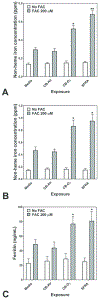
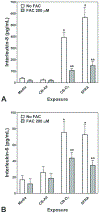
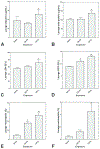
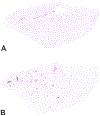

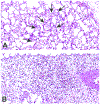
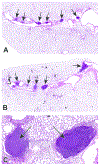
Similar articles
-
Variation in echocardiographic and cardiac hemodynamic effects of PM and ozone inhalation exposure in strains related to Nppa and Npr1 gene knock-out mice.Inhal Toxicol. 2010 Jul;22(8):695-707. doi: 10.3109/08958378.2010.487549. Inhal Toxicol. 2010. PMID: 20540624
-
Aerosol physicochemical determinants of carbon black and ozone inhalation co-exposure induced pulmonary toxicity.Toxicol Sci. 2023 Jan 31;191(1):61-78. doi: 10.1093/toxsci/kfac113. Toxicol Sci. 2023. PMID: 36303316 Free PMC article.
-
Ultrafine Particulate Matter Combined With Ozone Exacerbates Lung Injury in Mature Adult Rats With Cardiovascular Disease.Toxicol Sci. 2018 May 1;163(1):140-151. doi: 10.1093/toxsci/kfy018. Toxicol Sci. 2018. PMID: 29394414 Free PMC article.
-
Inflammatory cell signaling following exposures to particulate matter and ozone.Biochim Biophys Acta. 2016 Dec;1860(12):2826-34. doi: 10.1016/j.bbagen.2016.03.030. Epub 2016 Mar 23. Biochim Biophys Acta. 2016. PMID: 27015762 Review.
-
Pulmonary oxidative stress, inflammation and cancer: respirable particulate matter, fibrous dusts and ozone as major causes of lung carcinogenesis through reactive oxygen species mechanisms.Int J Environ Res Public Health. 2013 Aug 27;10(9):3886-907. doi: 10.3390/ijerph10093886. Int J Environ Res Public Health. 2013. PMID: 23985773 Free PMC article. Review.
Cited by
-
Transcriptomics of single dose and repeated carbon black and ozone inhalation co-exposure highlight progressive pulmonary mitochondrial dysfunction.Part Fibre Toxicol. 2021 Dec 15;18(1):44. doi: 10.1186/s12989-021-00437-8. Part Fibre Toxicol. 2021. PMID: 34911549 Free PMC article.
-
Pollution, Inflammation, and Vaccines: A Complex Crosstalk.Int J Environ Res Public Health. 2021 Jun 11;18(12):6330. doi: 10.3390/ijerph18126330. Int J Environ Res Public Health. 2021. PMID: 34208042 Free PMC article. Review.
-
Oxidized carbon black nanoparticles induce endothelial damage through C-X-C chemokine receptor 3-mediated pathway.Redox Biol. 2021 Nov;47:102161. doi: 10.1016/j.redox.2021.102161. Epub 2021 Oct 4. Redox Biol. 2021. PMID: 34624601 Free PMC article.
References
-
- Ghio AJ, Tong H, Soukup JM, et al. Sequestration of mitochondrial iron by silica particle initiates a biological effect. Am J Physiol Lung Cell Mol Physiol. 2013;305(10):L712–724. - PubMed
-
- Laughton MJ, Moroney MA, Hoult JR, Halliwell B. Effects of desferrioxamine on eicosanoid production in two intact cell systems. Biochem Pharmacol. 1989;38(1):189–193. - PubMed
-
- Hileti D, Panayiotidis P, Hoffbrand AV. Iron chelators induce apoptosis in proliferating cells. Br J Haematol. 1995;89(1):181–187. - PubMed
-
- Tanji K, Imaizumi T, Matsumiya T, et al. Desferrioxamine, an iron chelator, upregulates cyclooxygenase-2 expression and prostaglandin production in a human macrophage cell line. Biochim Biophys Acta. 2001;1530(2–3):227–235. - PubMed

